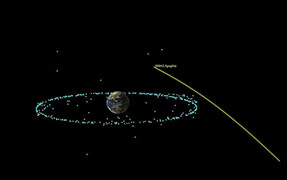When I wake in the morning, I have a habit of checking my smartwatch for its impartial assessment of my sleep score, which it calculates based on heart rate, breaths per minute, and movement. That same watch keeps track of my heart rate (I hit a new max! 191!), blood oxygen levels, and, of course, steps. The days that I fail to log 10,000 steps feel like a moral failing, in spite of the fact that there is no scientific basis for this specific daily step count. (A 2021 JAMA article found that the magic number for improved health outcomes and longer life is actually 7,000 steps per day.)
With the advent of the Internet, followed by smartphones and wearable health devices, we are awash in metrics. In addition to tracking a multitude of biometrics via consumer devices, we have apps to measure our productivity; researchers keep a close eye on downloads, citation averages, and altmetrics; and most of us on social media can’t help but notice growing (or, gasp, waning) impressions, likes, and follows.
Given the sheer number of metrics that arose with the digital age, it might be easy to mistake measures as an artifact of the modern era. But they are ancient. The earliest civilizations needed means to establish equivalencies, sizes, and values, which are the cornerstones of trade. Early people used the standards available to them: fingers, hands, and feet (a relic that persists in the Imperial system of units), which soon evolved into more precise and standardized measures, such as a stick that everyone in the community agreed would be used to measure depth or length.
Likewise, early scientists realized that in addition to standard units of measure, they could use math to calculate more extreme values of size, distance, or weight. Using optical observations, Greek astronomer Hipparchus, for example, correctly calculated the average distance between Earth and the Moon as early as 2 BC. Another ancient Greek, Eratosthenes, as early as 240 BC calculated the circumference of Earth to within 750 km of our modern estimate.
Modern scientists’ ability to measure is now nothing short of astounding. Scientists can measure things smaller, farther, larger, and more precisely than ever before. The feature articles in this issue of Photonics Focus explore modern metrology, from the extraordinary precision of the next generation of optical clocks, to the exquisitely sensitive mechanisms that allow scientists to detect gravitational waves originating from the collision of two black holes. Meanwhile, in semiconductor lithography, etch patterns are now so incredibly small that engineers rely on complex computational devices to check for crucial defects.
These are today’s modern metrics, and they impact us in ways both practical (detecting small movements of the Earth’s surface that might indicate an impending earthquake) and esoteric (understanding the origins of the Universe). These measures are far more interesting than steps, follows, likes, or sleep scores.
Gwen Weerts, Editor-in-chief




